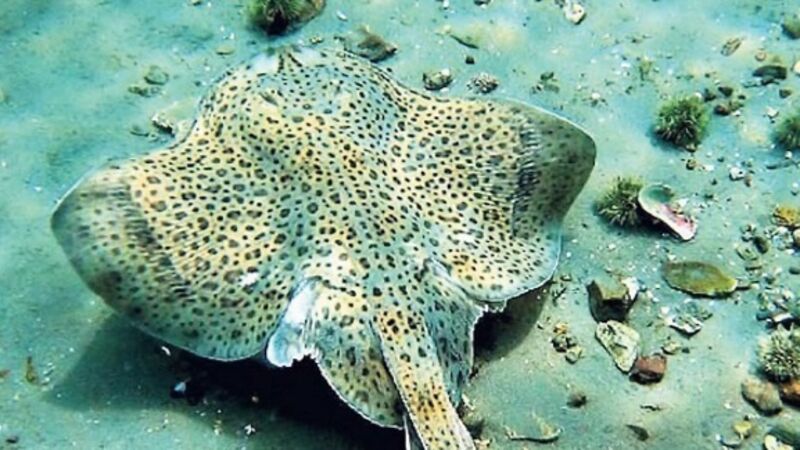Winter Skating away from extinction

A house mouse can have 10 litters of half a dozen ‘pups’ in a year.
One or two of the pups will have what it takes to survive; they go on to parent the next generation.
Slow coaches, like the panda, find ‘future shock’ a burden; taking ages to mature and producing few young, they can’t adapt quickly. New Canadian research, however, suggests that at least some slow-breeding creatures are more resilient than we thought. One species, the ‘winter’ skate of the western north Atlantic, has a survival trick up its sleeve.
The Canadian species has an Irish relative. The common skate is a huge bottom-dwelling flatfish; 2.5m long specimens, weighing over 100kg, and have been caught here. DNA analyses show there are, in fact, two closely-related species which, for practical purposes, are treated as one. Skates belong to the class of fish whose skeletons are of cartilage rather than bone. The class, which includes the sharks and rays, first appeared 395 million years ago. Skates evolved about 200 million years later.
The ‘manta ray of the north’ was once an important sport fish. I once heard an angler say how he it took him two hours to land one; the fish flattened itself as he dragged it through the water. The common skate, alas, isn’t common any more. Over-fishing and trawling damage to its seabed habitat have so reduced numbers that the International Union for Conservation of Nature lists the two species as critically endangered. The seas off the west of Ireland are among the few where the world’s largest skates survive in significant numbers. Fishing for them is illegal in EU waters. Any caught accidentally, or as by-catch, must be returned to the sea.
Skate don’t breed until they are 11 years old and will do so only every second year. Embryos develop in protective egg-cases buried in sand or mud. The cases, flat and rectangular with ‘horns’ sticking out of the corners, are big enough to cover the palm of the hand. A few decades ago, you would find skate ‘mermaid’s purses’ among shoreline debris but not any more.
Having been around so long, skate have become set in their ways. The leisurely approach to reproduction threatens their ultimate survival. They seem unable to cope in a rapidly changing world but bear in mind that this fish’s ancestors made it through two global mass extinctions.
The research in the Gulf of St Lawrence suggests rumours of the immanent death of the winter skate, ‘are much exaggerated’.
The species moved into Canadian waters as the ice receded about 7,000 years ago. Sea temperatures have risen by 10C since then. Seven millennia seems a long time, but it’s just the blinking of a palaeontologist’s eyelid. The skate, with its low fecundity and long maturation period, went through only a few hundred generations in that time, not enough for Darwinian natural selection to track the temperature rise.
We used to think that all adaptations were determined genetically and, in a sense, they are. However, some genes can be turned on or off by external triggers, a mechanism known as epigenetics. Such sleeper genes, the researchers argue, responded quickly to the rising temperatures, allowing the winter skate’s ancestors to adapt. “This mechanism may be particularly important for the persistence of sharks, skates and rays in the light of future climate change,” say the authors. Hopefully, our common skate can use it.
- J Lighten et al. Adaptive phenotypic response to climate enabled by epigenetics in a K-strategy species, the fish Leucoraja ocellata. Journal of the Royal Society Open Science. 2016.










